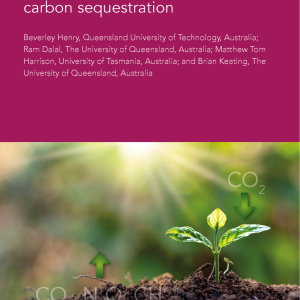
This book chapter discusses creating frameworks to increase soil carbon, covering the biophysical evidence on how different practices affect soil carbon, policy options, measurement systems and integration of economic, social and cultural dimensions.
Publisher’s summary
Restorative land management has potential to remove atmospheric carbon dioxide and store carbon in stable forms in soils contributing to climate change mitigation, healthier soils and food security supporting Paris Agreement targets and Sustainable Development Goals. We examine the evidence for a multi-disciplinary approach to designing frameworks to foster practices that increase soil carbon based on: (1) sound biophysical evidence linking practices to carbon sequestration in diverse soils and climates; (2) policy options for providing financial incentives for high-quality carbon offsets; (3) measurement systems that appropriately balance cost-effectiveness and accuracy; and (4) integration of economic, social and cultural dimensions that recognise co-benefits and trade-offs, and provide confidence for decision-making. As a policy framework with crediting and purchasing functions for soil carbon sequestration projects, the Australian Emissions Reduction Fund (ERF) is reviewed to provide insights into barriers and opportunities for uptake. We also review research needs across biophysical and socio-economic disciplines.
Reference
Henry, B., Dalal, R., Harrison, M. T. and Keating, B. (2022). Creating frameworks to foster soil carbon sequestration. Burleigh Dodds Science Publishing, Cambridge.
Read more here. See also the TABLE report Grazed and Confused?







Post a new comment »